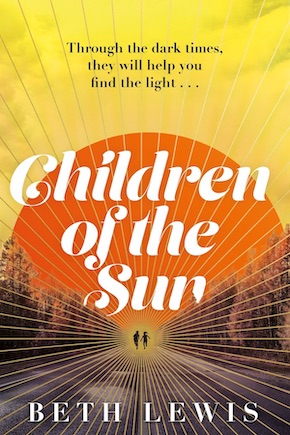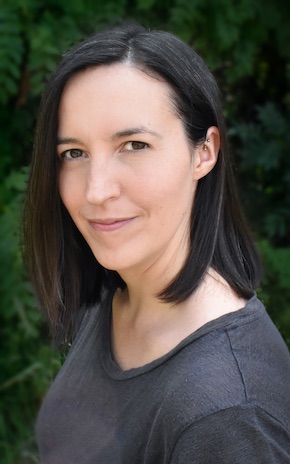Out there and inside our heads
by Beth Lewis
Truth is stranger than fiction when it comes to cults. They are fertile ground for endless documentaries, movies, TV shows, books, so much so that there seems to be a new Netflix show about one every month. But why?
Our fascination with cults comes from the same place as our fascination with serial killers and our podcast-fuelled obsession with true crime, we love to gawk at the extremes of humanity from a safe space behind a TV screen or page of a book. It’s through headphones on the bus our jaw hits the floor when we discover the atrocities and the lengths a cult leader has gone to, to control their followers and keep their position.
In the same vein as serial killers, these cult leaders become macabre celebrities. The charismatic man who dupes dozens, if not hundreds, of people into following him. Charles Manson. Jim Jones. Bagwhan Shree Rajneesh. David Koresh. Daniel Perez. Keith Raniere. It’s incredible to think these men (and women, there are female cult leaders too of course), have brainwashed thousands of people into abandoning their lives, their bodies, their independence, to give everything they have to one person under the guise of a community. For a writer, it’s hard to resist the pull of a cult narrative.
What has always drawn me to cults and what I wanted to explore in my novel Children of the Sun, aside from the psychological manipulations involved in recruitment and the tragic ends, is the outwardly absurd belief systems a lot of cults adopt and the followers believe, sometimes to such an extreme they are willing to give up their belongings, or commit murder or suicide in the name of those beliefs. From the outside, such obviously fictional stories of aliens and angels are so out there that it makes us question how someone could be sucked into that – and maybe if, in the same position, we would be too.
In The Family, a New Age religious cult that sprang up in the mid-1960s in Australia, its leader, a yoga teacher named Anne Hamilton-Byrne convinced her followers she was the reincarnation of Christ. She ended up adopting fourteen children, some children of other members, others found through less-than-ethical adoptions. All of the children were told Hamilton-Byrne was their mother and all of them were subjected to cruel treatment, beatings, torture and drug use. The members were mostly middle-class, well-educated people and yet they believed their child-abusing yoga teacher was Jesus.
It’s incredible to think these men and women have brainwashed thousands of people into abandoning their lives, their bodies, their independence, to give everything they have to one person under the guise of a community.”
More sinister was Angel’s Landing, where Daniel Perez convinced his followers he was an angel who needed to sleep with young girls to stay alive. He was also apparently an angel who took out life insurance policies on his members, one of whom ended up dead.
Then there is Scientology. It doesn’t like to talk about it, but it believes a figure called Xenu, the leader of a confederacy of planets, brought billions of his people to Earth, arranged them around a volcano then killed them with bombs. The spirits of those billions of dead aliens now reside in humans and cause us harm. Scientology was created by a science-fiction author, after all.
There are dozens more, from doomsday cults living in caves, to UFO cults, to pseudo-religious groups whose leaders claim to be the new messiah. But the common theme is that they often start small and simple. The religious groups suck people in with familiar doctrine, the more outlandish don’t reveal their beliefs until the followers are in too deep.
The exception to this was Heaven’s Gate, the cult that inspired the Golden Door Group in my new novel Children of the Sun. I could write for hours about them, but in a nutshell, Heaven’s Gate was founded in 1974 by Bonnie Nettles and Marshall Applewhite. Their views evolved over time but began with a mix of science fiction and Christianity. They were Star Trek fans and talked of a spaceship needing its crew. They were upfront about the nature of their beliefs and gained followers quite quickly. They didn’t follow the path of a traditional cult by continuing to expand, becoming more extreme and eventually imploding. Instead in 1976 they stopped recruiting and lived a monastic lifestyle. No drugs, no sex, no recruitment. What kind of a cult was this?
Heaven’s Gate created videos of themselves in their final days. When I watched them, what struck me most, even knowing this cult ended in mass suicide, was how calm and happy the members were. Even during the end itself, it was not a violent affair but a communal, quiet event that took place over several days. They had abandoned their lives and believed fully they would ascend to a higher level, live on a spaceship in the wake of the Hale-Bopp comet. As tragic as the outcome was, it was comforting in a way to see how completely they believed they were making the right decision for them. I remember wondering to myself how these people could have believed this Star Trek-inspired doctrine so devoutly, then my writer brain took over and I wondered, well, what if they were right?
—

Beth Lewis was raised in the wilds of Cornwall and split her childhood between books and the beach. She has travelled extensively throughout the world and has had close encounters with black bears, killer whales and Great White sharks. She has been, at turns, a bank cashier, fire performer, juggler, and is currently the Publishing Manager at Rebellion. She lives in Oxford with her wife and daughter. Her previous novels are The Wolf Road (Borough Press, 2016), Bitter Sun (Borough Press, 2018) and The Origins of Iris (Hodder & Stoughton, 2021) Children of the Sun is published by Hodder & Stoughton in hardback, eBook and audio download.
Read more
bethlewis.co.uk
@bethklewis
@HodderBooks
@HodderFiction

